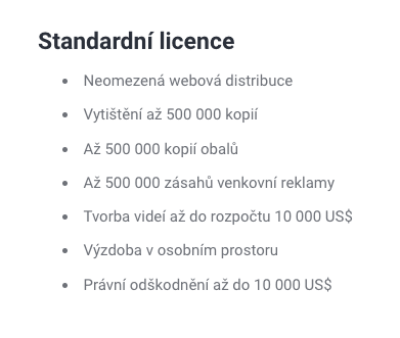Thinking about turning your passion for photography or design into a source of income? Shutterstock remains one of the top platforms for creators to monetize their work in 2025. Whether you’re a seasoned pro or just starting out, the opportunity to earn passive income by sharing your images, videos, and illustrations has never been more accessible. In this guide, we’ll walk you through the essentials of making money with Shutterstock, from understanding how the platform works to tips for maximizing your earnings. Let’s dive into how you can turn your creative skills into a steady income stream this year!
Understanding Shutterstock’s Platform and Revenue Model

Shutterstock is a well-established marketplace that connects photographers, videographers, and graphic designers with millions of users worldwide looking for high-quality visual content. The platform operates on a straightforward model: contributors upload their work, and Shutterstock makes it available for licensing. Whenever someone downloads your content, you earn a commission. But how exactly does this revenue system work? Let’s break it down in a friendly way.
How Shutterstock Works for Creators: You create an account and submit your content—photos, videos, vectors, or illustrations. Shutterstock reviews your submissions to ensure they meet quality standards. Once approved, your content goes live on the platform, ready for customers to find and license. As people purchase licenses to use your work, you earn a percentage of the sale.
Understanding Royalties and Earnings: Shutterstock uses a tiered royalty system, which means your earnings per download depend on your contributor level and the type of license purchased. Typically, the more you contribute and the more downloads you generate, the higher your royalty rate becomes. For example, new contributors might earn around 15-30% per download, while top contributors can earn up to 40% or more.
| Contributor Level | Royalty Rate | Monthly Upload Limit |
|---|---|---|
| Standard | 15-20% | Unlimited |
| Elite | Up to 40% | Unlimited |
Additional Revenue Streams: Beyond direct downloads, Shutterstock also offers opportunities like exclusive content licensing, custom content creation, and even subscription models that can help diversify your income. Plus, the platform’s global reach means your work can be licensed by companies, marketers, and creators all over the world, giving you a broad audience for your work.
In a nutshell, Shutterstock’s platform is designed to be user-friendly for creators and rewarding for those who consistently upload quality content. The key to success is understanding how the royalty system works and leveraging the platform’s features to maximize your earning potential. Ready to explore how to get started? Stay tuned for more tips and tricks!
Creating High-Quality Content That Sells

When it comes to making money on Shutterstock, the foundation is creating content that buyers want to purchase. High-quality content not only stands out but also increases your chances of earning consistent income. So, what exactly makes content sell? Let’s break it down.
First, focus on visual clarity and sharpness. Your images and videos should be crisp, well-lit, and free of distractions. Use natural light whenever possible, and pay attention to details like composition and focus. Remember, buyers often look for content that looks professional and polished.
Second, stay current with trends and popular themes. For example, in 2025, topics like sustainability, diversity, and technology are hot. Incorporate these themes into your work by creating images or videos that reflect current societal shifts. This makes your content more relevant and appealing to a wider audience.
Third, diversify your portfolio. Don’t just stick to one niche—try landscapes, business, lifestyle, technology, and more. The more varied your collection, the higher your chances of matching a buyer’s needs. And don’t forget to include different styles—minimalist, vibrant, monochrome—to cater to different tastes.
Another tip is to pay attention to technical details. Use proper keywords, descriptive titles, and accurate metadata. This helps your content get discovered more easily in searches. Also, ensure your images meet Shutterstock’s technical specifications—resolution, format, and size—to avoid rejection.
Lastly, always aim for originality. While it’s tempting to replicate popular styles, adding your unique touch can set your work apart. Whether it’s a creative angle or a distinctive color palette, uniqueness can be your ticket to standing out in a crowded marketplace.
Tips for Optimizing Your Submissions for Better Visibility

Once you’ve created stunning content, the next step is making sure it gets noticed. Optimization is key to increasing your downloads and, ultimately, your earnings. Here are some practical tips to help your work shine in the Shutterstock marketplace.
Use Effective Keywords: Think like a buyer. What words would someone search for when looking for content like yours? Use relevant, specific keywords that accurately describe your images or videos. Don’t overstuff with keywords—be concise and relevant. For example, instead of just “dog,” use “golden retriever puppy playing in park.”
Craft Clear and Descriptive Titles: Your titles should be straightforward yet informative. Instead of vague titles like “beautiful image,” try “Sunset over mountain range with vibrant colors.” Clear titles help both Shutterstock’s algorithm and potential buyers find your content easily.
Write Detailed Descriptions: Use the description box to add context and additional keywords. Explain what’s happening in the image or video, mention potential uses, and include relevant details. This not only improves searchability but also helps buyers understand the value of your content.
Select the Right Categories: Proper categorization ensures your content appears in relevant searches. Take your time to pick the most accurate categories and subcategories. This small step can significantly improve your content’s visibility.
Maintain Consistency and Upload Regularly: The more high-quality content you upload, the more chances you have to get discovered. Consistent uploads help build your portfolio and improve your visibility over time. Set a schedule that works for you and stick to it.
Engage with the Community: Participate in Shutterstock forums, read about what sells best, and learn from other contributors. Sometimes, small tweaks based on community feedback can make a big difference in how your content performs.
Remember, optimizing your submissions isn’t a one-time task. Keep refining your keywords, titles, and descriptions based on what works best. Over time, these small improvements can lead to more downloads, more earnings, and a more successful Shutterstock journey in 2025.
Strategies to Increase Your Earnings on Shutterstock
So, you’re ready to boost your income on Shutterstock? That’s fantastic! Earning more isn’t just about uploading a lot of images; it’s about smart strategies that make your portfolio stand out and attract buyers. Let’s dive into some proven tactics that can help you increase your earnings in 2025.
Focus on Trending Topics and Niches
One of the quickest ways to boost sales is by creating content around trending topics. Keep an eye on current events, seasonal themes, or emerging industries. For example, if remote work continues to grow, images around home offices, virtual meetings, or digital collaboration tools are in high demand. Use tools like Google Trends or Shutterstock’s popular search reports to identify what buyers are searching for.
Optimize Your Keywords and Titles
Think of keywords as your content’s GPS—without them, your images can get lost. Use descriptive, relevant keywords that match what buyers are likely to search for. Don’t forget to include synonyms and related terms. Craft clear, compelling titles that accurately describe your image. This improves discoverability and increases the chances of your work being purchased.
Offer a Diverse Portfolio
Don’t put all your eggs in one basket. Offer a variety of images—different themes, styles, and formats. This appeals to a broader audience and increases your chances of making sales. Consider including vectors, illustrations, and even videos to diversify your portfolio.
Stay Consistent and Upload Regularly
Consistency is key. The more high-quality images you upload, the more chances you have of being found. Set a manageable schedule—whether it’s weekly or monthly—and stick to it. Over time, this builds your presence and reputation on the platform.
Engage with the Shutterstock Community
Participate in forums, comment on other photographers’ work, and stay updated on platform news. Sometimes, connecting with others can lead to collaboration opportunities or helpful tips to improve your sales.
Utilize Analytics
Shutterstock provides insights into which of your images are performing best. Use this data to understand what works and what doesn’t. Focus more on creating similar content that’s already proven popular, and adjust your strategy accordingly.
Common Mistakes to Avoid When Selling on Shutterstock
While Shutterstock can be a lucrative platform, it’s easy to make mistakes that hinder your earning potential. Let’s cover some common pitfalls so you can steer clear and maximize your success.
1. Ignoring Keyword Optimization
One of the biggest mistakes is neglecting proper keywording. Poor or irrelevant keywords make it difficult for buyers to find your work. Always spend time researching and adding accurate, descriptive keywords to your images.
2. Uploading Low-Quality or Over-Edited Images
Shutterstock has high standards. Uploading images that are blurry, poorly lit, or heavily over-edited can lead to rejection or poor sales. Focus on producing sharp, well-composed, and natural-looking images that meet platform quality guidelines.
3. Not Protecting Your Work
Make sure to watermark your images until they’re approved, and consider adding metadata to help protect your copyright. Avoid sharing your work outside of Shutterstock without proper licensing, as this can lead to unauthorized use.
4. Overlooking Trends and Market Demand
Creating images that are outdated or not in demand wastes your time. Keep an eye on market trends and adapt your content accordingly. Regular research can prevent you from investing effort in topics that no longer sell.
5. Neglecting to Update and Refresh Your Portfolio
Stale portfolios can lead to stagnation. Continuously upload fresh content, retire old or underperforming images, and keep your portfolio active and relevant. This signals to Shutterstock that you’re an active contributor and can boost your visibility.
6. Ignoring the Platform’s Guidelines and Policies
Always read and follow Shutterstock’s submission guidelines. Violating rules can result in rejection or account suspension. Stay informed about updates to policies to ensure your work remains compliant.
By avoiding these common mistakes and applying smart strategies, you’ll be well on your way to increasing your Shutterstock earnings in 2025. Remember, patience and persistence are key—keep learning, experimenting, and refining your approach for the best results!
Tools and Resources to Help You Succeed as a Shutterstock Contributor
Getting started with Shutterstock and making a steady income isn’t just about uploading pretty pictures; it’s also about leveraging the right tools and resources to boost your efficiency and success. Luckily, there are plenty of options out there designed to help you optimize your workflow and stay ahead in the game.
First up, keyword research tools are essential. Since your images need to be discoverable, using tools like Keyword Tool for Shutterstock or SEMrush can help you find trending keywords that align with what buyers are searching for. Plus, some of these tools offer suggestions for related keywords, giving your images a better chance to be found.
Next, consider photo editing and management software. Adobe Lightroom and Photoshop are industry standards that help you enhance your images, ensuring they look professional and appealing. For bulk editing, tools like XnView or FastStone Image Viewer can save you a lot of time.
Another valuable resource is the Shutterstock Contributor Dashboard itself. It offers insights into your sales, trending content, and keyword performance. Regularly reviewing this data helps you understand what’s working and what isn’t, so you can adapt your strategy accordingly.
Additionally, joining online communities and forums dedicated to Shutterstock contributors can be a game-changer. Places like the Shutterstock Contributor Facebook Group or photography forums offer tips, feedback, and support from fellow contributors who’ve been in your shoes. Sharing experiences and learning from others can accelerate your growth.
Lastly, don’t forget to utilize educational resources. Shutterstock’s own blog and webinars often feature tips on trending styles, best practices, and platform updates. Platforms like Skillshare or Udemy also offer courses on stock photography, marketing, and branding—skills that can help you stand out.
In summary, combining the right tools—keyword research, editing software, analytics dashboards, and community support—can make a big difference in your Shutterstock journey. Think of these resources as your secret weapons to not only make more sales but also to build a sustainable, enjoyable income stream in 2025.
Staying Updated with Shutterstock’s Policies and Trends in 2025
As a Shutterstock contributor, staying current with the platform’s policies and the latest trends is crucial. The digital marketplace evolves rapidly, and what worked yesterday might not be effective today. Plus, understanding policy changes helps you avoid any unintentional violations that could impact your account.
Shutterstock’s policies around content submission, licensing, and contributor conduct are outlined on their official website. It’s a good habit to bookmark their Policies Page and check it regularly—think of it as your rulebook. They often update guidelines related to copyright, model and property releases, and acceptable content types. Staying compliant ensures your images remain available for sale and helps you maintain a good standing.
Trend awareness is equally important. In 2025, visual trends could shift toward new styles, themes, or subjects—think: emerging technologies, sustainability, or new cultural movements. To spot these trends early, follow industry blogs, social media channels like Instagram and TikTok, and even trending search data on Shutterstock itself. This way, you can tailor your content to what buyers are actively searching for.
Consider subscribing to newsletters from stock photography experts or platforms that analyze market shifts. Websites like Stock Photo Trends or Adobe Stock Insights often publish reports that highlight upcoming themes and popular styles. Incorporating these insights into your content creation process can significantly boost your sales.
Another tip is to participate in Shutterstock’s official webinars and events. They often share updates on platform features, best practices, and upcoming changes. Attending these sessions keeps you in the loop and demonstrates your commitment to maintaining high-quality, policy-compliant content.
Finally, be adaptable. As trends and policies evolve, so should your approach. Regularly review your portfolio, update older images if needed, and experiment with new styles inspired by current trends. By staying informed and flexible, you’ll position yourself as a top contributor in 2025 and beyond.
Remember: The more proactive you are about understanding Shutterstock’s policies and trends, the more confident you’ll feel in your content strategy—leading to more sales and a thriving contributor journey.
Conclusion and Final Tips for Maximizing Your Shutterstock Income
As you embark on your journey to earn income with Shutterstock in 2025, remember that consistency, quality, and strategic planning are key. To maximize your earnings, focus on creating high-quality, original content that meets current market trends and demands. Regular uploads keep your portfolio active and increase visibility, leading to more downloads and royalties.
Here are some final tips to help you succeed:
- Stay Updated on Trends: Follow industry trends and popular themes to tailor your content accordingly.
- Optimize Your Keywords: Use relevant, specific keywords to improve searchability of your assets.
- Diversify Your Portfolio: Upload a variety of content types, including photos, vectors, and videos, to appeal to a broader audience.
- Engage with the Community: Participate in forums and feedback groups to learn best practices and gain exposure.
- Leverage Promotions: Take advantage of Shutterstock’s promotional opportunities and sales to boost your earnings.
- Monitor Your Performance: Use analytics tools to track which content performs best and refine your strategy accordingly.
By applying these tips and maintaining a proactive approach, you can steadily grow your Shutterstock income and turn your creative passion into a sustainable revenue stream in 2025 and beyond.

